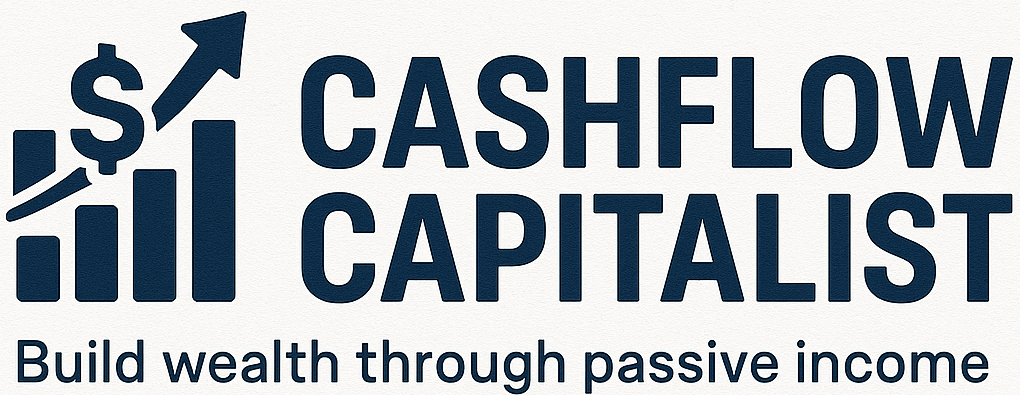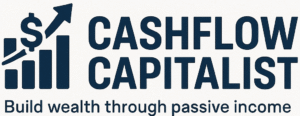Investing in Precious Metals: A Smart Beginner’s Guide to Gold, Silver, and Beyond in 2025
Looking for a way to protect and grow your wealth? In uncertain times, precious metals like gold and silver are a smart choice. They offer stability, inflation protection, and long-term value. This guide will help you start investing in metals and build a strong financial future.

Precious metals have been key to wealth for thousands of years. They protect against inflation and economic uncertainty. By looking into low-risk, high-reward investments, you can diversify your portfolio. This could help secure your financial future.
Key Takeaways
- Precious metals offer a hedge against inflation and economic downturns.
- A 5-10% allocation to precious metals can balance your portfolio.
- Gold and silver ETFs provide liquidity and direct exposure.
- Precious metals have a limited supply, making them a good choice for wealth protection.
- ETFs are more liquid and easier to manage than physical holdings.
The Fundamentals of Investing in Precious Metals
Thinking about adding precious metals to your investment mix? It’s a smart move. Gold, silver, and platinum have been valued for centuries. They’re great for keeping wealth safe during tough times.
The Historical Significance of Precious Metals as Wealth Preservers
Precious metals have kept their value over the years. This makes them a solid choice when the economy is shaky. For example, during the 2008 crisis, gold prices soared as people looked for safe investments. Their value is also boosted by their use in jewelry and industry.
“Gold is a currency that’s been around for thousands of years, and it’s the most recognized and accepted currency globally.”
Modern Portfolio Theory and Diversification Benefits
Modern Portfolio Theory (MPT) stresses the need for a diverse investment portfolio. Precious metals are a key part of this strategy. They help balance out the risks of stocks and bonds. This makes your portfolio stronger.
| Investment | Correlation with Gold | Correlation with Stocks |
|---|---|---|
| Gold | 1.00 | 0.02 |
| Stocks (S&P 500) | 0.02 | 1.00 |
| Bonds (10-year Treasury) | -0.15 | 0.30 |
Adding precious metals to your strategy can make your portfolio more stable. It’s important to know the different ways to invest in them, like physical bullion or ETFs.

Understanding the Precious Metals Market in 2025
The precious metals market in 2025 is full of challenges and chances. As an investor, you face a complex world. It’s shaped by many global factors.
Current Market Trends and Price Forecasts
The precious metals market is seeing a rise in interest because of economic uncertainty. Gold and silver prices are expected to be unpredictable, with big gains possible. People are looking to diversify with precious metals.

Global Economic Factors Affecting Metal Prices
Global economic factors like inflation rates, currency changes, and political tensions affect metal prices. It’s key for investors to keep up with these to make smart choices.
The Canadian Precious Metals Landscape
In Canada, the precious metals market is doing well. There are many reputable dealers and online platforms for buying and selling. The Canadian market is also affected by global trends, so it’s important to know both local and international factors.
Gold: The Cornerstone of Precious Metal Investing
Gold is a key asset in precious metal investing. It’s known for its lasting value and stability. These qualities make it a favorite in many investment portfolios, even when the economy is shaky.
Gold’s Unique Properties as an Investment Asset
Gold is durable, malleable, and scarce, making it a great investment. It doesn’t corrode like other metals and can be easily shaped into coins or bars. Its limited supply and hard extraction add to its value.

Historical Performance and Future Outlook
Gold has done well when the economy is down or prices rise. For example, during the 2008 crisis, gold prices went up as people looked for safe investments. Gold has kept its value over time. Experts think gold will keep being important in investment portfolios.
“Gold is a safe-haven asset that investors flock to during times of uncertainty. Its historical performance and limited supply make it an attractive option for those looking to diversify their portfolios.”
Expert Insights on Gold’s Role in Modern Portfolios
Experts say gold is key in today’s investment portfolios. It helps protect against inflation and market ups and downs. They suggest putting 5-10% of your portfolio in gold. This can reduce risks and make your portfolio more stable.
| Investment Strategy | Recommended Gold Allocation | Benefits |
|---|---|---|
| Conservative | 5% | Stability, Inflation Hedge |
| Moderate | 7% | Balanced Risk, Diversification |
| Aggressive | 10% | Enhanced Growth, Volatility Protection |
Silver, Platinum, and Palladium: Beyond the Gold Standard
Investors looking to grow their precious metals collection should consider silver, platinum, and palladium. These metals are driven by both investment demand and industrial needs. They offer unique opportunities and help diversify your portfolio, even if they’re not as well-known as gold.

Silver: Industrial Demand Meets Investment Appeal
Silver is versatile, used in electronics, solar panels, and medical equipment. Its industrial use and investment appeal make it a great choice for portfolio diversification. Silver’s dual role as an industrial metal and investment asset can lead to significant price changes.
When investing in silver, keep these points in mind:
- Industrial demand: Silver’s use in various industries can drive its price.
- Investment demand: Silver is also sought after as a store of value and for hedging.
- Market volatility: Silver prices can be volatile, influenced by both industrial and investment demand.
Platinum and Palladium: The Industrial Precious Metals
Platinum and palladium are key in the automotive sector for catalytic converters. Palladium, in particular, has seen remarkable price growth due to its role in reducing vehicle emissions. These metals offer investors a way to tap into the automotive industry’s trends and technological advancements.
Key considerations for platinum and palladium include:
- Their primary use in catalytic converters for vehicles.
- The impact of automotive industry trends on their demand.
- The possibility of supply constraints affecting their prices.
Strategic Metal Selection: Comparing Risk and Return Profiles
When choosing silver, platinum, and palladium for your portfolio, evaluate their risk and return profiles. Each metal has unique characteristics influenced by different market factors. Diversification across these metals can help reduce risks from individual market fluctuations.
“The key to successful precious metal investing is diversification across different metals and investment vehicles.” –
Understanding the distinct properties and market dynamics of silver, platinum, and palladium helps make informed investment decisions. This aligns with your investment goals and risk tolerance.
Methods of Investing in Precious Metals
There are many ways to invest in precious metals. Each method has its own benefits and risks. You can choose from physical bullion, paper investments, mining stocks, and digital gold to diversify your portfolio.
Physical Bullion: Coins, Bars, and Collectibles
Physical bullion is a favorite among investors who want something they can hold. You can buy gold, silver, platinum, or palladium coins and bars. These are recognized and easy to trade. Some also invest in collectible coins or rare metals, which might increase in value over time.
When you invest in physical bullion, think about the costs of storage and security.
Paper Investments: ETFs, Mutual Funds, and Certificates
Paper investments are great for those who want something easy to trade. ETFs, mutual funds, and certificates let you invest in precious metals without needing to store them physically. These investments follow the price of the metal, making it simple to get into the market.
You can also look into other investment options to make your portfolio more diverse.
Mining Stocks and Royalty Companies
Investing in mining stocks and royalty companies can be a way to make more money from the precious metals market. These investments can offer higher returns than buying metals directly. But, they also come with more risks, like operational costs, management decisions, and geopolitical issues.
Digital Gold and Blockchain-Based Metal Investments
Digital assets have brought new ways to invest in precious metals. Digital gold and blockchain-based investments let you own a part of a physical metal or a digital version of it. This modern method offers benefits like easy trading, lower storage costs, and more. But, it’s important to know the technology behind it and the risks involved.
| Investment Method | Benefits | Risks |
|---|---|---|
| Physical Bullion | Tangible asset, widely recognized | Storage and security costs |
| Paper Investments | Convenient, liquid, tracks metal price | Market volatility |
| Mining Stocks | Potential for high returns, leveraged exposure | Operational risks, management decisions |
| Digital Gold | Liquidity, ease of transfer, lower storage costs | Technological risks, market volatility |
Precious Metals as Inflation Hedges and Safe Haven Assets
When the economy is uncertain, investors often look to precious metals for protection. Gold and silver have kept their value even when money loses value.
Historical Performance During Inflationary Periods
In the 1970s, a time of high inflation, gold prices soared. This made gold a strong defense against rising costs. Silver and other precious metals also gained value, making them good choices during inflation.
Strategic Allocation During Economic Uncertainty
To use precious metals wisely, investors should plan carefully. A strategic allocation fits with their investment goals. It’s smart to spread investments across different metals and other assets.
Expert Strategies for Inflation Protection
Experts say to keep a long-term view when investing in precious metals. It’s important to check and update your portfolio often. This keeps it in line with the economy and your goals.
Building Your Precious Metals Investment Strategy
Starting your journey in precious metals investment is exciting. It’s key to have a solid strategy. This means knowing your financial goals, understanding your risk level, and picking the best investment method for you.
Determining Your Investment Goals and Timeline
Your goals and timeline are vital in shaping your strategy. Are you looking to grow your wealth over time or make quick profits? Knowing your goals helps you choose the right metals and how much to invest.
Portfolio Allocation: How Much to Invest in Metals
Figuring out the right portfolio allocation for metals is important. It depends on your financial health, risk tolerance, and goals. Experts often suggest 5% to 15% of your portfolio for metals. This can protect against inflation and market ups and downs.
Dollar-Cost Averaging vs. Lump Sum Investing
There are two main ways to invest in metals: dollar-cost averaging and lump sum investing. Dollar-cost averaging means investing a set amount regularly, which helps with market swings. On the other hand, lump sum investing is about putting in a big amount all at once. It’s good if you think the market will go up.
Both methods have their advantages. The best choice for you depends on your financial situation and goals.
Practical Guide to Buying Precious Metals in Canada
For Canadians wanting to invest in precious metals, knowing how to buy is key. There are many dealers and online sites to choose from. It’s important to know how to pick the right one.
Reputable Canadian Dealers and Online Platforms
Choosing the right dealer is essential when buying precious metals in Canada. Here are some top options:
- Canadian Coin & Currency: They have a wide range of precious metals.
- Max Bullion: They offer good prices and a variety of products.
- Online platforms like APMEX and JM Bullion also serve Canadian customers.
Comparing dealers can help you find the best deals.
Authentication and Purity Considerations
It’s important to check the authenticity and purity of precious metals. Look for:
- Hallmarks or stamps that show the metal’s purity.
- Certification from trusted assay offices.
- Buy from trusted dealers who ensure their products are genuine.
Premiums, Spreads, and Hidden Costs
It’s important to understand the costs of buying precious metals. Be aware of:
- Premiums over the spot price.
- Spreads between buying and selling prices.
- Hidden costs like shipping and handling fees.
Expert Tips for First-Time Buyers
For those new to buying precious metals, consider these tips:
- Start with popular products like gold and silver coins.
- Diversify your investment across different metals.
- Store your metals securely to protect your investment.
By following these tips, Canadians can invest in precious metals with confidence.
Storing and Protecting Your Precious Metals
Keeping your precious metals safe is very important. You have many ways to store them, each with its own benefits and drawbacks.
Home Storage Solutions and Security Measures
Storing metals at home is handy but needs strong security. Think about getting a top-notch safe or a secret vault. Make sure your storage spot is hard for thieves to find.
Key considerations for home storage:
- Invest in a fireproof safe.
- Consider a security system.
- Keep the storage location private.
Bank Safety Deposit Boxes: Pros and Cons
Bank safety deposit boxes are safe for metals. They have strong security and a controlled place. But, you can only get in during bank hours. There’s also a chance the bank could get robbed or face a disaster.
| Pros | Cons |
|---|---|
| High security | Limited access hours |
| Controlled environment | Risk of bank robbery or disaster |
Professional Vault Storage Options in Canada
Professional vaults are experts in keeping metals and other valuable things safe. They have top security, like 24/7 watch and insurance. Make sure the vault you pick is well-known and follows Canadian rules.
Choosing the best storage option helps keep your metal investments safe and secure.
Tax Implications of Precious Metal Investments in Canada
Investing in precious metals in Canada comes with tax implications. As a Canadian investor, you’re not just looking at the gains. You also think about how these gains will be taxed.
Capital Gains Tax on Precious Metals
In Canada, precious metals are considered commodities. They are taxed on capital gains when sold. If you make a profit, you’ll report it on your tax return. The capital gains inclusion rate is 50%, so you only pay tax on half of your profit.
Precious Metals in Registered Accounts: RRSP and TFSA
You can put precious metals in RRSPs (Registered Retirement Savings Plans) and TFSAs (Tax-Free Savings Accounts). Gains in a TFSA are tax-free. But, RRSP withdrawals are taxed as income.
Record-Keeping Requirements for Metal Investors
Keeping detailed records of your precious metal transactions is key. You need to track purchase and sale dates, amounts, and costs. Accurate record-keeping helps you follow tax rules and makes filing taxes easier.
Knowing these tax implications helps you make better choices with your precious metal investments in Canada.
Conclusion: Creating Your Precious Metals Investment Plan for 2025 and Beyond
Investing in precious metals is a smart move. It’s key to have a solid plan that fits your financial goals and how much risk you’re willing to take. Your plan should mix well with other investments, acting as a shield against inflation.
Start by thinking about what you want to achieve, how much risk you can handle, and when you plan to reach your goals. Figure out how much of your portfolio should be in precious metals. This depends on your overall investment mix and how you spread out your risks.
Adding precious metals to your portfolio can help lower risks and boost returns over time. As we move into 2025 and the future, keep up with market changes. Adjust your plan as needed to stay on track with your financial dreams.
FAQ
What are the benefits of investing in precious metals?
Investing in precious metals can diversify your portfolio. They also protect against inflation and economic uncertainty. Metals like gold, silver, platinum, and palladium can preserve wealth.
How do I invest in precious metals?
You can invest in precious metals in several ways. Options include physical bullion, ETFs, mutual funds, mining stocks, and digital gold. Each choice has its own benefits and risks.
What is the best precious metal to invest in?
The best metal depends on your goals and risk tolerance. Gold is often seen as safe. Silver has industrial demand and can be more volatile. Platinum and palladium are also good, with unique properties.
How do I store my precious metals?
You can store metals at home, in a bank, or a professional vault. Each option has its advantages and disadvantages. Consider security, access, and costs when choosing.
Are precious metals a good hedge against inflation?
Yes, metals like gold and silver often do well during inflation. But, past success doesn’t guarantee future results. Other factors can affect prices.
How do I buy precious metals in Canada?
Buy metals in Canada from reputable dealers, online, or coin shops. Research the dealer, understand costs, and check the metals’ authenticity and purity.
What are the tax implications of investing in precious metals in Canada?
Investing in metals in Canada can lead to tax on capital gains. Know the tax rules, including for RRSPs and TFSAs. Keep detailed records of your investments.
Can I invest in precious metals through my RRSP or TFSA?
Yes, you can invest in metals through RRSPs or TFSAs. But, there are specific rules and tax implications. Understand the qualified investments and tax rules.
How do I determine the right allocation of precious metals in my portfolio?
The right allocation depends on your goals, risk tolerance, and market conditions. Consider your financial situation, investment horizon, and diversification strategy.
What is dollar-cost averaging, and how can it be applied to precious metal investing?
Dollar-cost averaging involves investing a fixed amount regularly, regardless of market performance. It can reduce the impact of market volatility and timing risks in precious metal investing.




